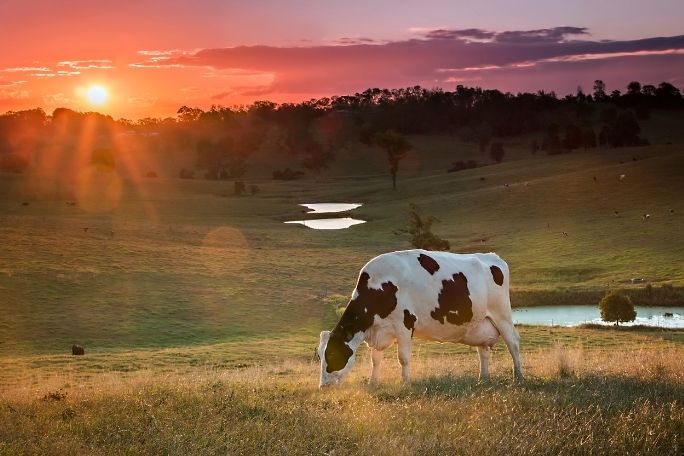Lesson summary
In this activity students will start by watching two clips; one on intensive dairy farming practices and another on small scale organic dairy farming. Students are asked to reflect on these clips by working in groups to create a dairy farm of the future. Students do this by using the ‘thinking hats’ learning tool, brainstorming initial ideas and then using these ideas to create a model of a future dairy farm.
Learning intentions:
Students will...
- make judgments on the ethical and sustainable management of dairy farms
- recognise that they have the skills and knowledge to create their own vision for the future
- understand that different people have different ideas about what the future should look like but that these differences can be used to give strength to the vision and its meaning.
Success criteria:
Students can...
- watch and reflect on videos
- contribute to class discussions
- participate in a role play activity
- work collaboratively.
Lesson guides and printables
Curriculum links
Select your curriculum from the options below.
Lesson details
Curriculum mapping
Australian curriculum content descriptions:
Year 9 & 10 Design and Technologies:
- Investigate and make judgments on the ethical and sustainable production and marketing of food and fibre (ACTDEK044)
- Apply design thinking, creativity, innovation and enterprise skills to develop, modify and communicate design ideas of increasing sophistication (ACTDEP049)
Syllabus Outcomes: D&T5.2.1, D&T5.3.2, D&T5.5.1
General capabilities: Critical and creative thinking, Ethical understanding.
Cross-curriculum priority: Sustainability OI.3, OI.5, OI.8.
Relevant parts of Year 9 & 10 Design and Technologies achievement standards: Students explain how people working in design and technologies occupations consider factors that impact on design decisions and the technologies used to produce products, services and environments. Students create designed solutions for one or more of the technologies contexts based on a critical evaluation of needs or opportunities. They create and connect design ideas and processes of increasing complexity and justify decisions.
Time required: 2-3 sessions
Level of teacher scaffolding: Low – oversee activity, facilitate discussion.
Resources required
- Student Worksheet – one copy per student
- Device capable of presenting a website to the class
- Internet access
- Access to YouTube
- Materials or programs for making models (e.g. paper and cardboard or desktop graphics program)
- Presentation Rubric
- KWHL chart.
Skills
This lesson is designed to build students’ competencies in the following skills:
- Communication
- Creativity
- Critical thinking
- Collaboration
- Problem solving
Additional info
This resource was created in collaboration with Sustainable Table with the aim of empowering young people to use their dollar to vote for a food system that is fair, humane, healthy and good for the environment. To learn more about Sustainable Table, click here.


Welcome back!
Don't have an account yet?
Log in with:
Create your free Cool.org account.
Many of our resources are free, with an option to upgrade to Cool+ for premium content.
Already have an account?
Sign up with:
By signing up you accept Cool.org's Terms and Conditions(Opens in new tab) and Privacy Policy(Opens in new tab).